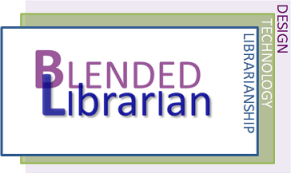This week in Richmond, VA open education enthusiasts have gathered for three days to share their ideas and experiences for advancing open education and promoting affordable learning content.
The sense among attendees is that at the Thirteenth Annual Open Education Conference the message is shifting from defining what “open” is and the virtues of openness in education to a focus on the practice of open pedagogy and what it means to engage students not only in learning but the creation of open learning content.
That seemed to be the message of day one’s opening session keynoted by Gardner Campbell on the theme of “insight” in higher education. While his presentation was in ways mystifying, his ideas for “insight oriented education” strongly resonated with me. Think of it as students taking an active role in their own education that leads to new discoveries and powerful insights.
This concept was perhaps best illustrated by comparing what David Wiley called “disposable assignments” – the kind that students hate to do, that faculty hate to grade, and that are thrown away soon after they are completed – with the “renewable assignments” that are characterized by infusing learning activities with creativity and exploration.
Three presenters then followed with their own examples of how they engaged students in renewable assignments focused on the creation of course learning content. Can students work together to create a textbook for their own course? Apparently they can and enjoy doing so.
On day one I went to as many sessions as I could on faculty adoption of OER.
That’s our big push for this academic year. Encourage more faculty to adopt OER, particularly existing open textbooks. I thought I might learn some things to help accomplish this goal.
I heard faculty and librarians talk about how to get faculty to understand what OER are, how to engage with an academic department, what factors encourage faculty to use open textbooks, how to be a faculty champion for OER. You get the impression that at institutions where there is a textbook affordability initiative a great deal of effort goes into convincing faculty that they should stop using costly textbooks and start adopting OER.
Why should faculty use OER? Lots of reasons, but it usually comes down to:
[A] Students save money when faculty use OER.
[B] Students learn more effectively when faculty use OER.
Faculty are more likely to adopt OER when they are incentivized to do so. It can help if the institutional leadership supports it and creates policy around it and when there are faculty and non-faculty staff who help other faculty integrate OER into their course.
You could make logical arguments to faculty to convince them they should be saving students money or that they will get better results on learning outcomes with OER. Or you could just pay them to adopt OER – or at least give it a try – which is what quite a few academic libraries, including my own, are doing.
We would of course prefer for faculty to intrinsically desire to adopt OER – for all of the reasons above. But too often they don’t. And we are fairly familiar with the barriers. We know them from reports such as the Babson Survey or we share them based on our own experience. Presenters also pointed to challenges around lack of time, inability to identify OER, lack of inertia for change, powerful textbook sales tactics and more. But we know these are all solvable hurdles to OER adoption.
So what did I learn from all these presentation on faculty adoption OER?
Here are things to try, but plan on taking the initiative and making the case for OER to faculty:
- Identify faculty who are known to be collegial in and beyond their departments who also are open to trying new things; engage in conversations about OER with these faculty.
- It’s better to reach out to individual faculty rather than trying to win over entire academic departments.
- Don’t push too hard but encourage faculty to explore OER to achieve both [A] and [B].
- Try working through curriculum committees to have OER adoption encouraged in course design.
- It helps to have a faculty OER champion who demonstrates motivation and commitment.
- Understand the objections to OER (e.g., lack of quality; difficult to locate; violates copyright; etc.) and be prepared to respond to it – but acknowledge the concerns.
- Present findings from reports (e.g., Babson, Reynolds Community College) on student savings, improvements to learning, etc.
The good news is these strategies and others with which we have become familiar, such as incentives from the library, bringing OER workshops to campus with faculty and librarian facilitators, forming institutional textbook affordability committees, cooperative efforts with college stores, leveraging the power of consortia – this can all work in encouraging faculty to adopt OER.
But it will take time and persistence. Quite a few speakers drew comparisons between where higher education is currently with OER and where it was a decade ago with the LMS, when many faculty questioned why they should even bother to change the way they teach. Eventually the tide turned as more students demanded it and it became accepted by entire academic departments. And of course, there is insight when educators conclude this all makes perfectly good sense – because it’s in the best interest of our students. OER will get there.
